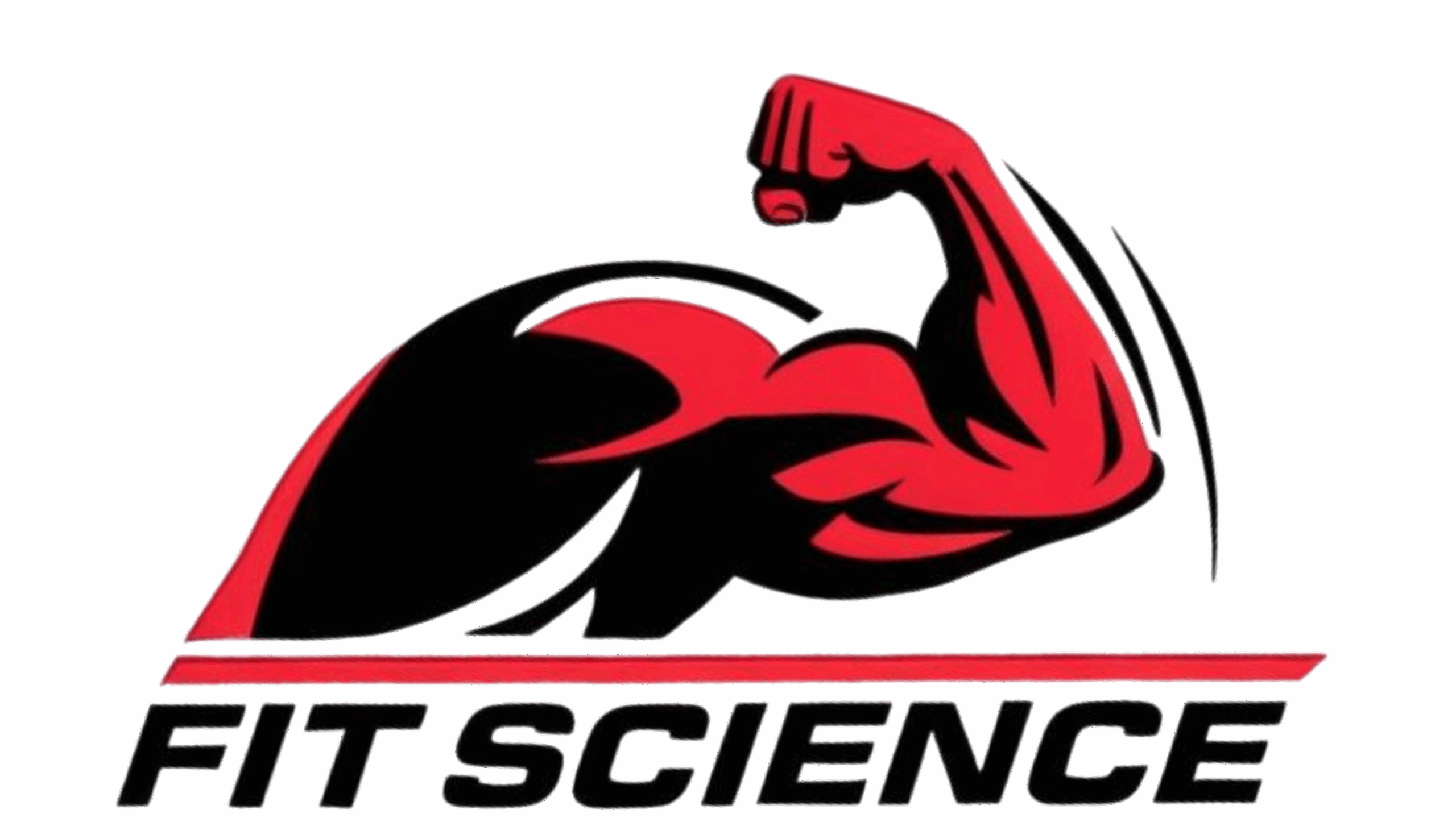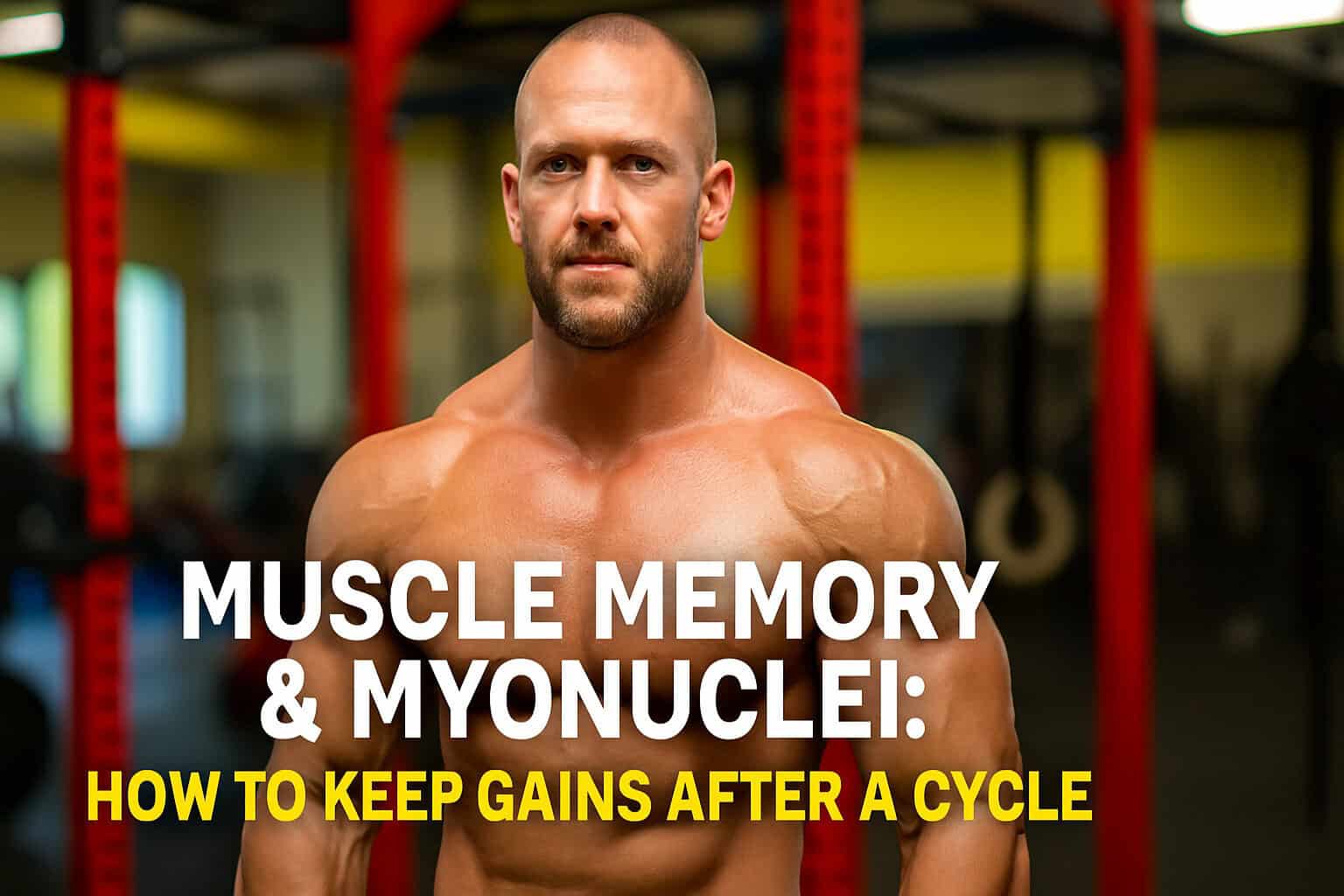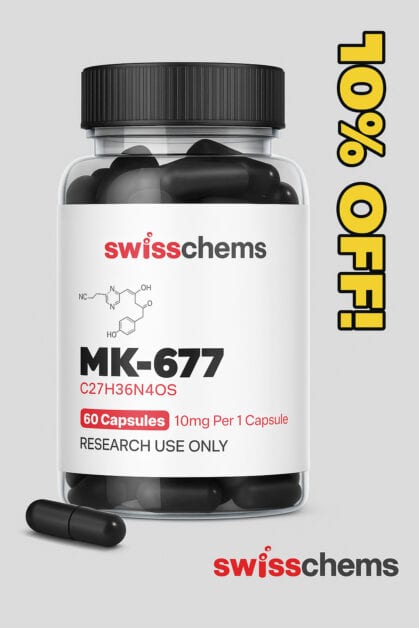Muscle Memory & Myonuclei: How to Keep Gains After a Cycle
We’ve all seen it happen. A guy comes off a cycle—whether it’s SARMs, gear, or peptides—and within a few weeks, his size starts to fade. His shoulders soften, the vascularity fades, strength drops. But then there’s another guy… same cycle, similar size, but he holds on to most of it. Months later, he still looks like a beast.
What gives?
The answer has less to do with the compounds and more to do with what happened inside his muscle cells—specifically, how many myonuclei he built, and how he trained and recovered after coming off.
This article breaks down the real science of muscle memory, how it relates to myonuclei, and exactly what you can do to hold onto your gains long after your cycle ends.
💭 Muscle Memory: Beyond the Bro-Science
We throw the term “muscle memory” around a lot in bodybuilding. Usually it’s when someone takes time off and regains their size fast, or when a guy bounces back post-injury and looks like he never left.
But muscle memory isn’t magic. It’s biology. And at the heart of it is something permanent—myonuclei.
🧬 Myonuclei: The Muscle Factory Managers
Every muscle fiber is a massive, multinucleated cell. The more myonuclei a muscle fiber has, the more capacity it has to synthesize protein, grow, and rebuild.
Here’s the key: when you train—especially with intensity or while enhanced—your muscle cells recruit satellite cells that fuse to your fibers and donate new myonuclei. These aren’t temporary. Once they’re there, they stay, even if you lose size later.
Think of them as tiny managers inside your muscles. More managers = more growth potential.
🔁 Why This Matters After a Cycle
When you’re on a cycle, you’re typically recovering faster, training harder, and pushing heavier weights. All of that leads to an increase in myonuclei—especially if you’re running anabolic compounds like testosterone, RAD-140, or GH peptides like IGF-1 LR3.
So even if you lose water weight or shrink slightly post-cycle, the infrastructure is still there. And with the right post-cycle approach, you can hold on to those gains—or even build from them later—without starting from scratch.
🔎 How Long Do Myonuclei Stick Around?
Here’s where it gets wild.
Studies on rodents showed that once myonuclei are added, they remain for life—even after complete detraining and muscle atrophy. Human studies suggest similar long-term retention, especially in trained individuals.
In short: if you’ve built muscle once, and did it right, your body remembers how to rebuild it faster and easier the next time.
And if you built those gains on a cycle? The potential to retain them is even greater—if you play your cards right.
🧠 The Smart Way to Train Post-Cycle
After your cycle ends, your hormones start to dip. That’s reality. If you go back to hammering failure sets with 5-day splits and zero recovery, you’ll dig yourself into a hole.
Here’s a smarter approach:
🧱 1. Focus on Mechanical Tension, Not Volume
Keep the weight moderately heavy (70–80% of 1RM), reps in the 6–10 range, and emphasize slow eccentrics, pauses, and controlled execution.
Why? Because mechanical tension maintains the anabolic signal in muscle—even in a hormonally suppressed state.
📉 2. Reduce Frequency Slightly
Back off from hitting each muscle 2–3x per week. Once is fine for now, with optional second light sessions focused on blood flow.
This conserves recovery resources when natural test is lower.
🚀 3. Use PUMPS Strategically
Blood flow–based training (e.g. drop sets, rest-pause) helps shuttle nutrients and increase insulin sensitivity. Think of it as “maintenance mode” for muscle health.
Just don’t make it your whole program.
🍳 What to Eat to Stay Big Off-Cycle
Now is not the time to slash calories.
Even though you may feel “puffier” or less full, undereating post-cycle will cost you lean mass faster than anything. Here’s how to approach it:
-
Keep protein high (1.2–1.5g per pound of bodyweight)
-
Carbs should be clean and timed—around training especially
-
Don’t fear a slight calorie surplus. If you gained lean size on-cycle, your body wants to keep it.
-
Stay hydrated—less water retention doesn’t mean you need less fluid. Dehydration is a silent size killer.
🔬 Support Supplements That Make a Real Difference
Let’s be real—test boosters won’t replace test. But some compounds do support hormonal rebound, reduce cortisol, and help preserve muscle:
| Supplement | Function | Dose |
|---|---|---|
| Ashwagandha | Cortisol control, libido & mood support | 600mg/day |
| L-Carnitine (LCLT) | Enhances androgen receptor density | 1–2g/day |
| Creatine Monohydrate | Preserves strength & intracellular water | 5g/day |
| Vitamin D3 + K2 | Hormone and bone health | 5,000 IU D3 + K2 combo |
| Zinc/Magnesium | Supports T production, improves sleep | ZMA blend before bed |
| Tongkat Ali (Longjack) | Supports LH and free test levels | 200–400mg/day |
Bonus: If you’re coming off SARMs or gear and skipping PCT, you’re setting yourself up for losses. A proper post-cycle therapy (clomid, nolva, enclomiphene) is often the single biggest factor in whether you keep your gains.
❌ Mistakes That Make You Lose Size Fast
Here’s what ruins post-cycle progress faster than estrogen rebound:
-
Dropping calories too soon out of fear of “bloating”
-
Overtraining to compensate for “feeling flat”
-
Skipping PCT altogether
-
Stopping creatine and carbs simultaneously (terrible idea)
-
Ignoring sleep quality when natural test is already down
💡 The Timeline of Retention (Real Lifters’ Experience)
Let’s break down what holding onto gains really looks like:
1 Month Post-Cycle
-
Slight strength drop
-
Size holds, slightly less fullness
-
Libido and energy drop if no PCT
3 Months Post-Cycle
-
If you trained and recovered well: most gains intact
-
If you dieted hard or stopped training hard: 20–40% size loss
6–12 Months
-
With proper cycles, training, and support, muscle density may even improve
-
Myonuclei remain, and gains are easy to rebuild even after time off
-
With poor habits, you’re back at baseline
🧠 Final Strategy: How to Cycle for Gains That Stick
If your goal isn’t just looking great on-cycle, but keeping what you build long-term, here’s how smart lifters approach it:
-
Train hard enough to stimulate satellite cell fusion
-
That’s what gives you more myonuclei
-
-
Eat and recover enough to allow muscle to grow and stabilize
-
Don’t cut gains short with poor nutrition or sleep
-
-
Run proper PCT
-
Natural test levels matter for muscle preservation
-
-
Deload gradually
-
Don’t jump from beast-mode to beach-mode overnight
-
-
Use creatine, carnitine, and blood flow–stimulating work to keep the cellular environment muscle-friendly
🎤 Bottom Line
You can’t keep everything forever. But if you cycle smart, train with intent, and support your body the right way—you can hold onto far more than most lifters think is possible.
Muscle memory isn’t just real—it’s a tool. And myonuclei are your advantage, even off-cycle. Treat your body like it’s trying to hold on to your gains, not sabotage them, and it will reward you.
📚 Sources
-
Gundersen K. Muscle memory and a new cellular model for muscle atrophy and hypertrophy. J Exp Biol.
-
Bruusgaard JC, Gundersen K. Myonuclei acquired by overload exercise precede hypertrophy and are not lost on detraining.
-
Egerman MA, Glass DJ. Signaling pathways controlling skeletal muscle mass.
-
Petrella JK et al. Resistance training increases satellite cell and myonuclear number.
-
Murach KA, et al. Myonuclear permanence supports long-term muscle memory.
-
Wilborn CD, et al. Effects of post-cycle therapy on hormonal profiles and muscle retention.
-
Ziegenfuss TN et al. L-Carnitine L-Tartrate’s effect on androgen receptor expression.











